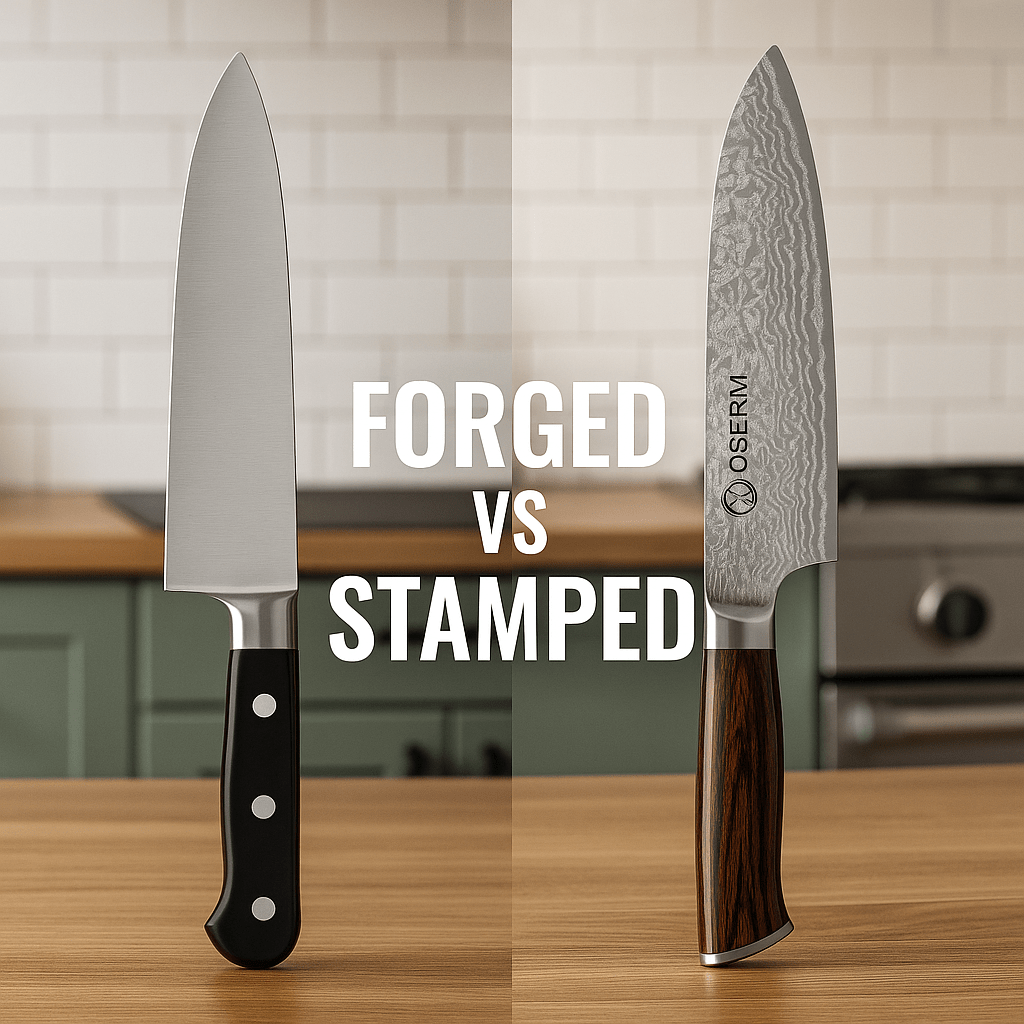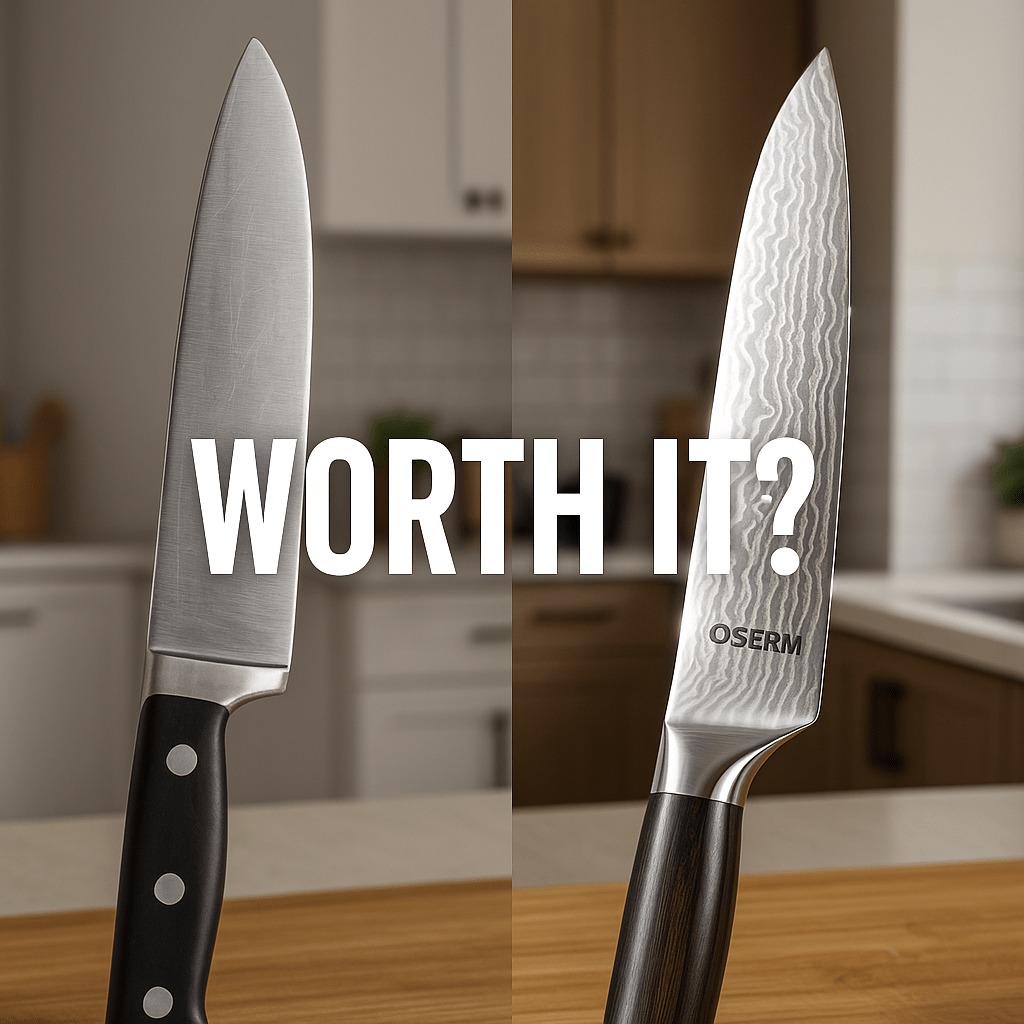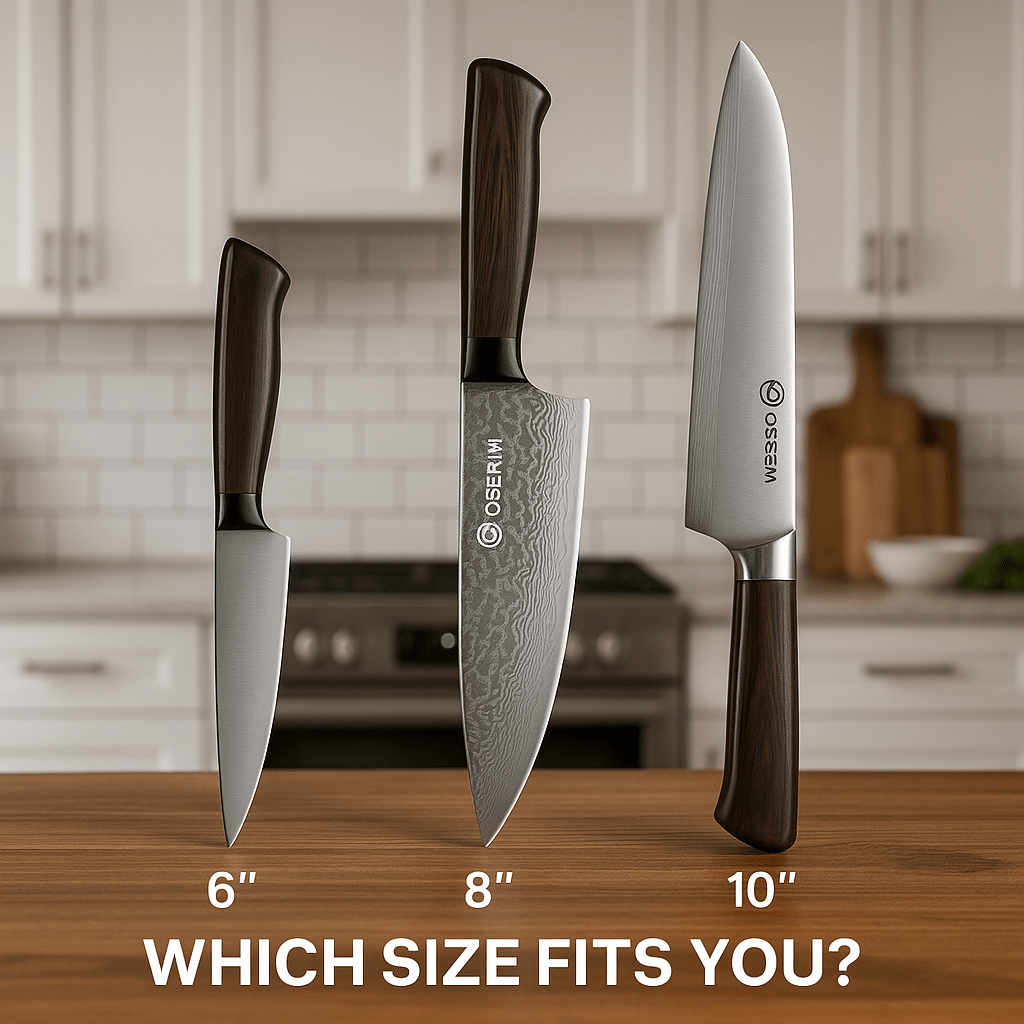
Forged vs Stamped Knives – Which Should You Pick?
When shopping for knives, you’ll often see the words forged and stamped. At first glance, both blades look similar—they cut food, they shine, they feel sharp. But how a knife is made dramatically influences its durability, sharpness, balance, and long-term value. Let’s explore the differences and decide which is right for you.
What Are Forged Knives?
A forged knife is created by heating a piece of steel and hammering or pressing it into shape. This traditional method compresses the steel molecules, making the blade denser and stronger. The result is a knife with a visible bolster (the thick junction between blade and handle), superior balance, and excellent edge retention.
- Strength: Forging increases hardness and durability.
- Balance: Weight is evenly distributed, giving smoother control.
- Longevity: With care, a forged knife can last a lifetime.
- Appearance: Often features layered Damascus patterns, showing artistry as well as function.
What Are Stamped Knives?
Stamped knives are made by cutting a blade shape out of a sheet of steel, much like using a cookie cutter. These blades are lighter, less expensive, and quicker to produce. They don’t usually have a bolster and often feel less substantial in hand.
- Cost: Usually much cheaper, making them appealing for beginners.
- Lightweight: Easier to handle for some users, especially in repetitive cutting tasks.
- Durability: Tend to dull faster and may not last as long under heavy use.
Forged vs Stamped: Side-by-Side Comparison
| Feature | Forged Knife | Stamped Knife |
|---|---|---|
| Manufacturing | Heated and hammered into shape | Cut from a steel sheet |
| Durability | Extremely strong, long-lasting | More prone to bending or dulling |
| Edge Retention | Keeps sharpness for longer | Needs frequent sharpening |
| Balance | Heavier with bolster, well balanced | Lighter, may feel unbalanced |
| Price | Higher investment | Affordable for beginners |
When to Choose Forged Knives
- If you cook daily and need a reliable tool.
- If you want a knife that will last decades.
- If balance and control matter for your cooking style.
- If you value aesthetics—Damascus forged knives are visually stunning.
When to Choose Stamped Knives
- If you’re on a tight budget.
- If you prefer lightweight tools for casual cooking.
- If you only need a knife for occasional use.
OSERM’s Take on Forged Knives
At OSERM, we focus on forged Damascus knives because they represent the best balance of performance and beauty. Our VG-10 core steel, layered with 67 Damascus cladding layers, ensures long-lasting sharpness and strength. Each knife is crafted not just for cutting, but for elevating the entire cooking experience—whether at home or in professional kitchens.
Conclusion
Forged vs stamped isn’t just about price—it’s about how you want your knife to perform. Forged knives excel in durability, sharpness, and long-term value, while stamped knives are lighter and budget-friendly. For those who see cooking as a daily craft or passion, forged knives are the clear winner.
Weekly Deal 🔥
Ready to experience the craftsmanship of forged Japanese knives? Explore OSERM’s Damascus Knife Collection today.
You Might Also Like
- Cheap vs Premium Knives – What’s the Difference?
- Best Knife Size for Home Cooking – 6”, 8”, or 10”?
- The Truth About Damascus Knives – Worth It or Not?
Tags: forged vs stamped knives, OSERM Damascus knives, kitchen knife guide, premium vs budget knives






